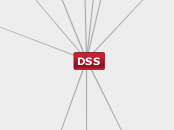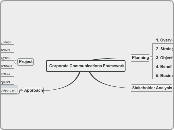DSS
Tools
modeling
statistical modeling
business rule based decisions
tending
what-if analysis
predictive analysts
decision trees
multivariate regression
logistics regression
forecasting
scenario manager
uncertainty analysis
monto-carlo simulation
sensitivity analysis
regression
asset modelling
failure performance
asset degradation
design views/configuration
financial models
renewals planning
degradation modeling
financial modeling
risk modelling
extreme value theory (EVT)
historical simulation (HS)
value at risk (VaR)
market risk
whole life costing
ROI
NPV
IRR
Tariff optimisation
Capital budgeting: Investment decision tool
business intelligence
cubes
special-purpose data management system
relational data warehouse
summarise financial data by product
decision services
linear assits
dynamic segmentation
GIS exchange
points assists
capabilities
interfaces
asset management system
Cloud-based Digital Asset Management systems
emerge to complement on-premise systems.
Production asset management systems
visual-effects shots
animation
3D feature film
video game
Library asset management systems
video or photo archiving.
Brand asset management systems
marketing collateral or fonts
logos
product imagery
business rules
apply rules to models
modify rule
define rule
user management
combine expert knowledge with info
Specific instruction
context specific
typically simple
rule-based knowledge
Formulaic
Popular understanding
Knowledge from the media
Primary source knowledge
basic technical competence
Interactional expertise
Knowledge gained from learning the language of specialist
groups
Contributory expertise
ability to contribute new knowledge or to teach
data management
data exchange capability
data mining
neural networks
fuzzy query and analysis
data visualization
cluster analysis
case-based reasoning
Benefits
Supports learning
The use of DSS in an organization results in two type of learning
Secondly, there is better factual understanding of business as well as the decision making environment.
First managers themselves learn new concepts
High satisfaction among decision makers
They gain a confidence and satisfaction that they are good decision makers.
In DSS computers and latest technology aids the decision making process
Helps in reducing cost
Research and case studies reveal that use of DSS in an organization helps in making quicker decisions and reduce cost
Provides competitive advantage
Use of decision support system in an organization provides a competitive advantage over other organizations which do not use DSS.
Improves efficiency
DSS is efficient decision making, resulting in better decisions
because use of DSS results in quick transfer of information, better data analyses, thus resulting in efficient decisions.
Helps in saving time
DSS provides timely information
used for decision making and results in enhanced employee productivity.
Research has demonstrated that decision support systems help to reduce decision cycle time for an organization
Features
Quick response
Support varieties of decision trees
Support varieties of decision processes
Standalone and web-based integration
Data access
Modeling and analysis
Ease of development by end user
Human control of the process
Interactive and efficiency
Interactive and ease of use
Adaptable and flexible
Support Intelligence, Design, Choice
Interdependence and sequence of decisions
Support individuals and groups
Solve semi-structured and unstructured problems
DDSS supports the personal decision making styles of individual managers
DSS is user initiated and user controlled
DSS has enough flexibility to accommodate changes in the environment, the approach and the needs of the users
DSS combines the use of models and analytical techniques with conventional data access and retrieval functions
DSS improves the effectiveness of the decision rather than its efficiency
Phases
Monitoring
Monitoring the results of implementation for feedback
Imolementation
Issues
Resistance to Change
Manage Change
Making the Decision Happen
Choice
Blind searches
shooting in the dark
Heuristics
Judgmental knowledge of an application area that constitutes the rules of good judgment in the field
Algorithms
step-by-step search
Analaytical Technic
use mathematical formulas
Design
Select Choice Models
Normative
Descriptive
What-if Scenarios
Simulation
Narrative
Select a principle of choice
Test for Feasibility
Develop Alternative Course of work
alternative with the lowest cost that will meet an acceptable level of goals
alternative with the highest ratio of goal attainment to cost
alternative that realizes the highest level goal
Intelligence
Problems
Information overload
Data estimation is often subjective
Data may not be accurate or precise enough
Obtaining data may be expensive
Data are not available
steps
Problem Ownership
Assignment of authority to solve the
problem
Problem Decomposition
Complex problems can be divided into sub-problems
Problem Classification
Place the problem in a definable category
Problem Identification
identification of organizational goals and objectives
applications
Production and Operations Managment
Inventory Planning
Resource management
Manufacturing Industry
Master Scheduling
Planning For Demand
Human resource management
Sales process
Marketing
Agricultural production
Business and management.
Clinical decision support system
medical diagnosis
future trends
The DSS Software Market Continues To Develop And Mature
Organizational Impacts Of DSS
Enhancement Of DSS Applications With Values And Ethics
Research On Interactions Between Individuals And Groups
Single user decision support systems
The World Wide Web and group/organizational/global DSS
Knowledge-based design support systems (intelligent DSS)
Classification
Modern Classifications
Knowledge-driven DSS
is a DSS that collects and stores 'expertise' so that it can be used for decision-making when required.
Document-driven DSS
is a DSS that uses computer storage and processing to provide document retrieval and analysis.
Videos
Sounds
Images
Hypertext documents
Scanned documents
Communications-driven DSS
is a DSS that uses network and communications technologies to support decision-relevant collaboration and communication
interactive video
electronic mail
document sharing
audio conferencing
Data Driven DSS
is a DSS that gives access to time-series internal data. Data ware houses that have tools that provide facility to manipulate such data are examples of advances systems.
Data mining
OLAP
Holsapple and whinston`s Classification
Compound DSS
It is built by using two or more of the five structures
Rule-Oriented DSS
It follows certain procedures adopted as rules.It follows certain procedures adopted as rules.
Solver-Oriented DSS
is an algorithm or procedural written for performing certain calculations and particular program type
Spreadsheet-oriented DSS
Modify procedural knowledge and also instruct the system to execute self-contained instructions
Database-Oriented DSS
It contains organised and highly structured data
Text-Oriented DSS
It contain textually represented information that could have a bearing of information
alter's output classification
degree of action implication of system of system outputs
This kind of DSS works when the decision to be taken is based on well-structured tasks
credit scoring
insurance renewal rate calculation
This kind of DSS provides solutions through the use of optimization models which have mathematical solutions
resource allocation
material usage optimization
scheduling systems
This type of DSS can also perform 'what if analysis' and calculate the outcomes of different decision paths, based on simulated models
equipment and production simulations
risk analysis models
generating estimates of income statements and balance sheets
estimating profitability of a new product
This type of DSS provides access to sets of decision oriented databases and simple small models
product planning and analysis
sales forecasting based on a marketing database
This type of DSS supports the manipulation of data through the use of specific or generic computerized settings or tools.
budget analysis
data warehouse applications
This type of DSS primarily provides access to data stores/data related items.
monitoring systems
Components
DSS Software System
Backward Analysis Sensitivity Models
Sets a target value for a variable and then repeatedly changes other variables until the target value is achieved
Forecasting Models
Market research methods
Time series analysis
Regression models
Optimization Analysis Models
Used for making decisions related to optimum utilization of resources.
Sensitivity Analysis Models
provide answers to what-if situations
Statistical Models
Deviation Function
Median Function
Knowledge Base
Provide Expertise to solve semi-structured and unstructured problems
Datamining
Model Base
Mathematical
Economics
Analog
Corelation
Regression
Trend Analysis
iconic
Physical Representations
User Interface
Interaction Elements
Adjustment Handle
Selection
Cursor
Insertion Pointer
Pointer
Structural Elements
Tabs
Controls
Icons
Menus
Windows
User
Intermediaries
Staff Assistant
Expert Tool User
Business Analyst
Staff Specialist
Database
Database Management System
Database Access Language
SQL
Procedures
To generate the reports of data retrieved from database.
To make backup copies of database
To log on to the DBMS.
Procedure to install the new DBMS.
Data
Metadata
Operational Data
Hardware
Output Device
Printer
Screen
Input Device
Mouse
Keyboard
Software
Application programs
Operating system
DBMS software itself
Query Facility
Handles Unstructured Data
Handles Structured Data
Data Directory
An inventory that specifies the source, of the data elements that are stored in a database.
Application
Web Database servers
Multimedia Database
Web Browser data access
Data Mining
Datawarehouse
Contains Data from Transaction systems
DSS Database
External data mined form the Internet
Data generated by different Application
Internal data from Organization
Taxonomy
Suggestion DSS based on logic models
suggest to the decision maker the best action May incorporate an Expert SystemUse the system to recommend a decision
Applicant applies for loans
suggest to thedecision maker the best actionA prescriptive model
Optimization model-based DSS
incorporate uncertaintyAssign sales force to territoryProvide the best assignment schedule
estimate the effects of different decision alternativeBased on optimization models
Representational model-based DSS
solve decision problemusing forecastsCan be used to augment the capabilities ofAccounting models
inventory decisions
Accounting and financial model-based DSS
Use internal accounting dataProvide accounting modeling capabilitiesCan not handle uncertaintyUse Bill of Material
Make pricing decisions
Calculate production cost
Analysis information systems
The information from one file, table, can becombined with information from other filesto answer a specific query.
Data analysis systems
access to dataAllows data manipulation capabilities
Airline Reservation
File drawer systems
provide access to data items
decisionATM Machine
Challenges
Social challenges
Greater situational awareness while performing tasks
information pushed to employees for action taking
workplaces
Organizational challenges
Uncertain consequences
Maintaining perspective on the needed organization changes
Deciding priorities
Coping with a lack of human resources
Technical challenges
Processing
Automatic data collection
High-speed wireless remote access
Dynamic
Improve and evolve every 18-24 months









